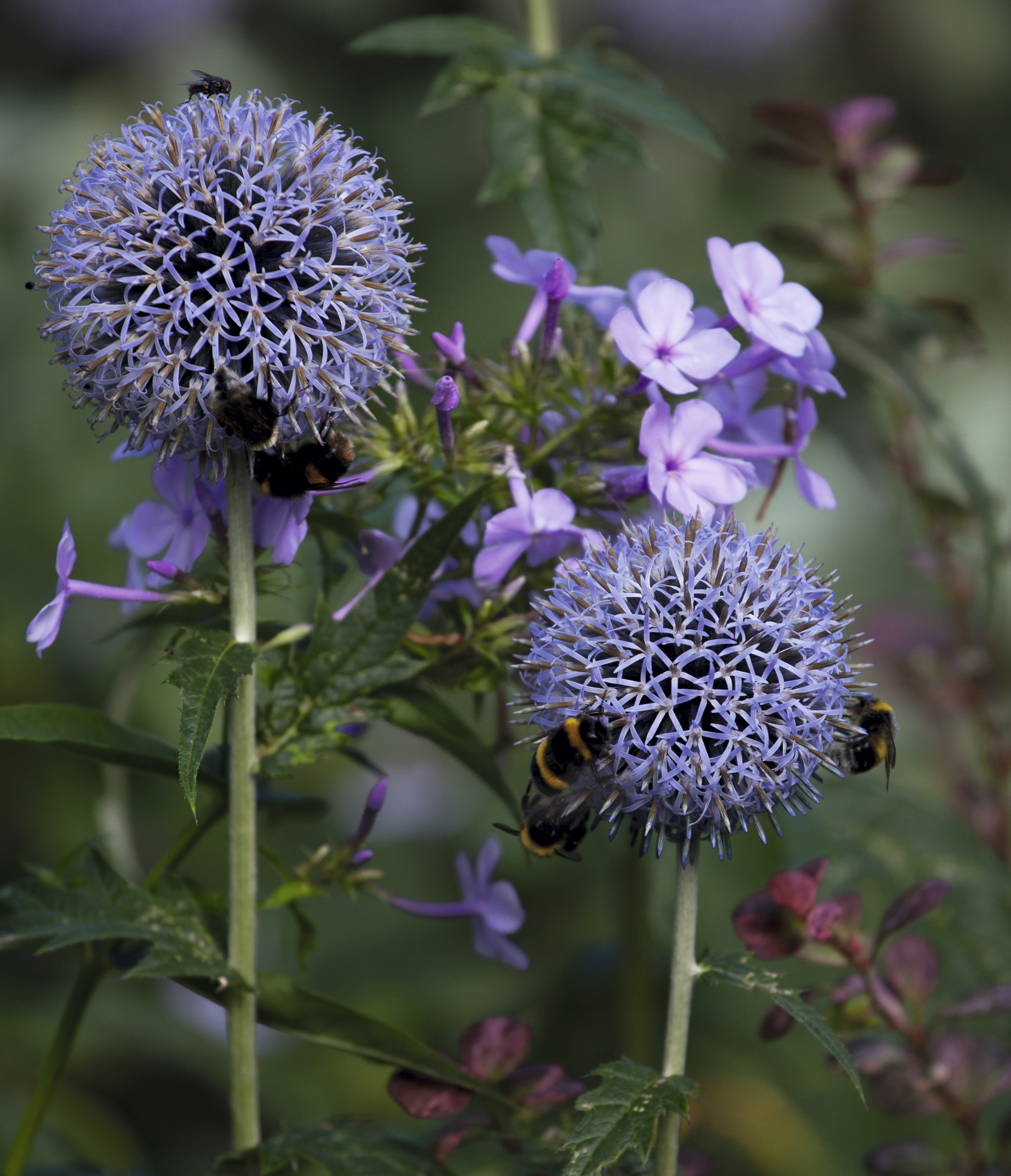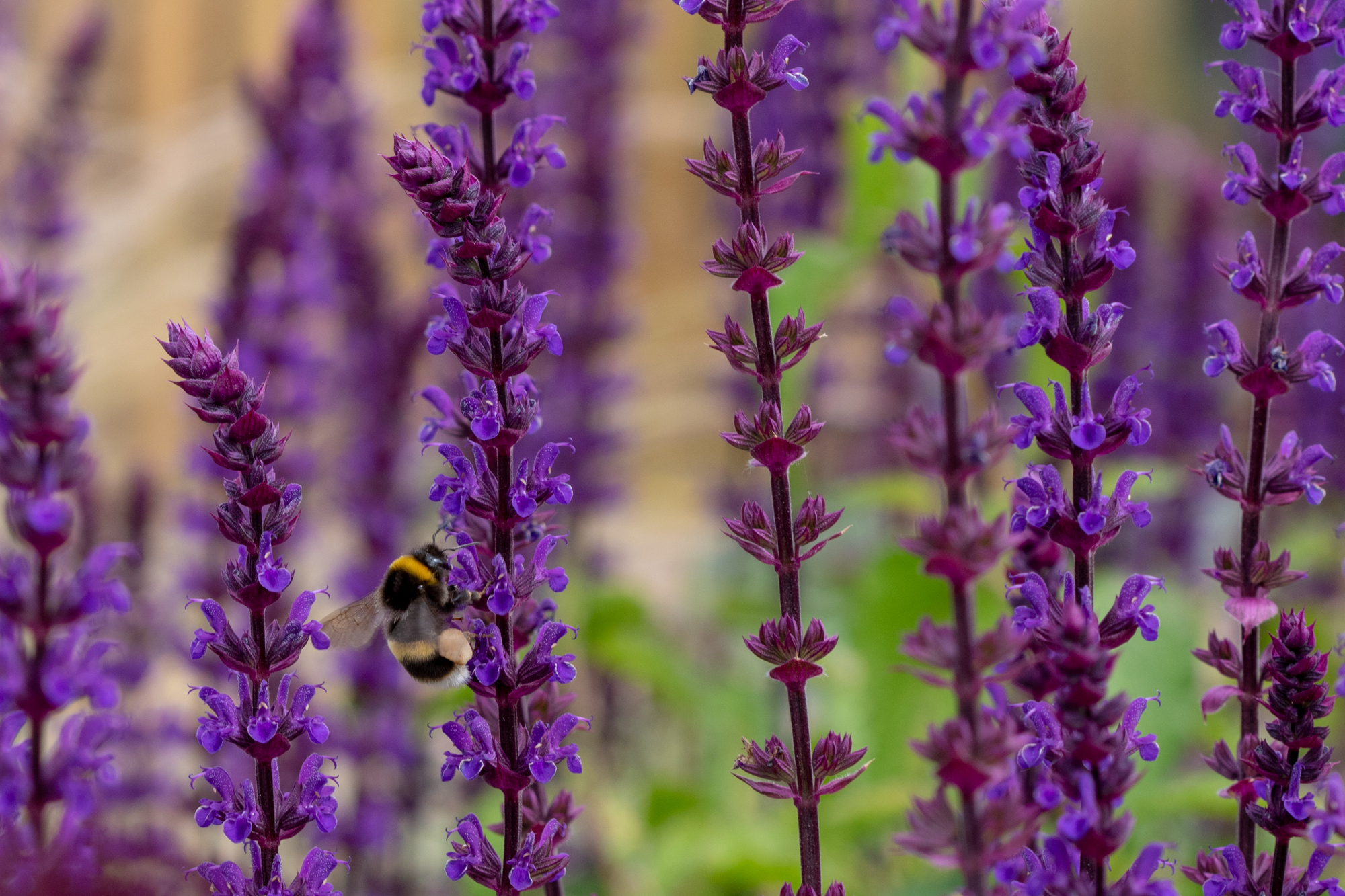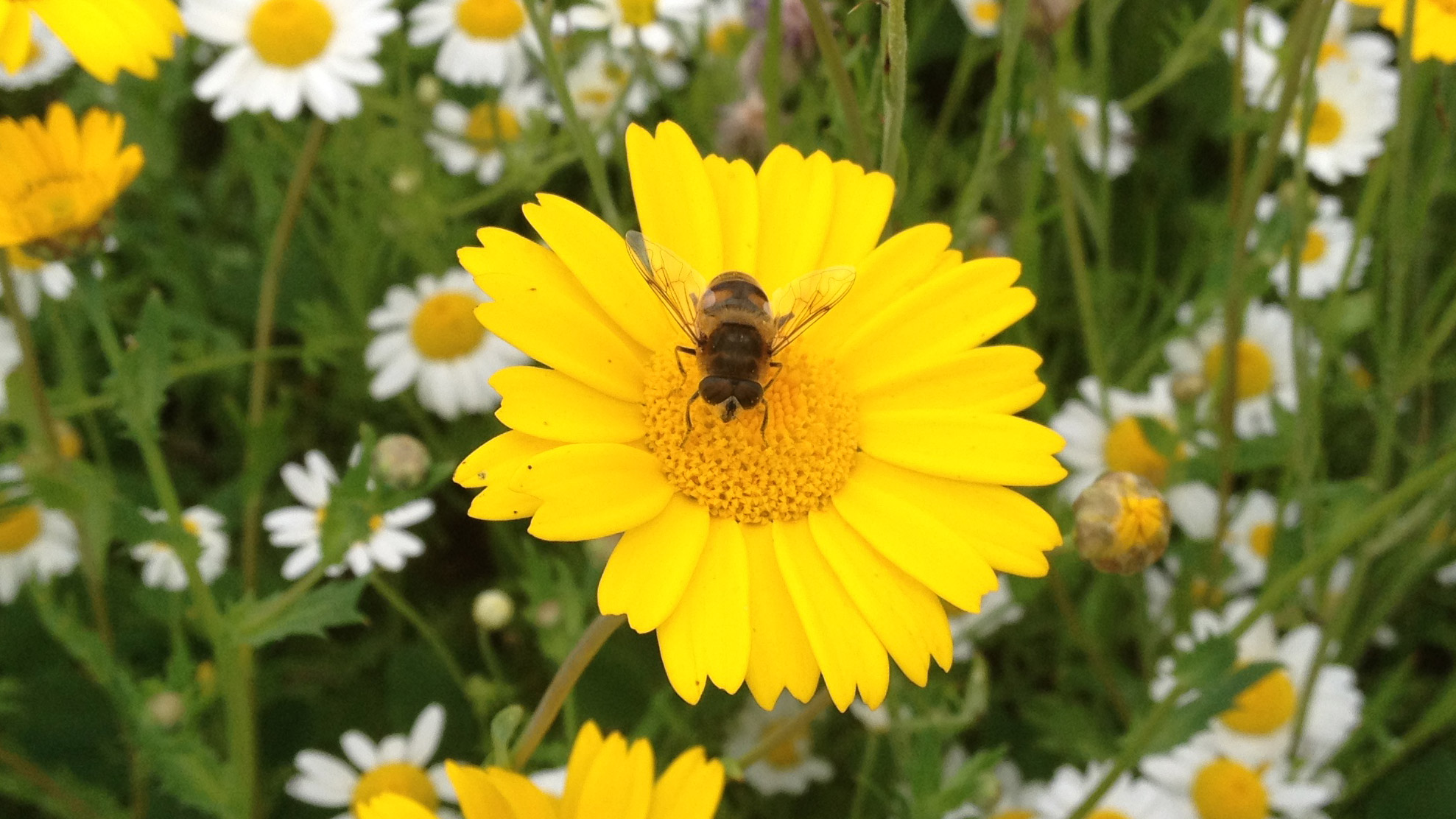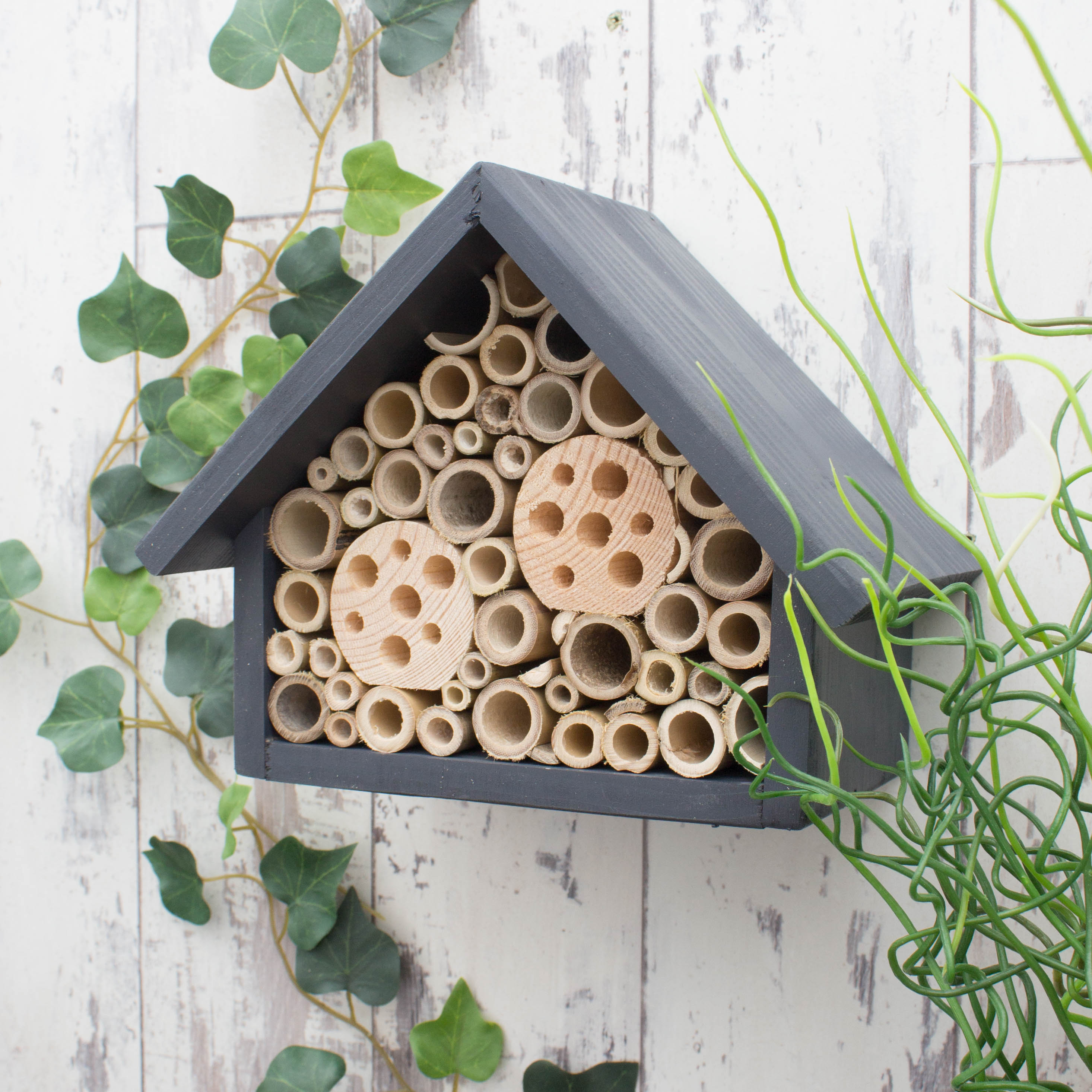How to create a bee-friendly garden
Create a bee friendly garden and help attract these key pollinators by choosing plants bees love, by using alternatives to chemical pesticides, and much more

Bees are essential to our eco-system and our crops, and we know that their numbers are rapidly declining. There are several reasons for this, excessive use of pesticides and the dwindling of bees' natural habitats among them. The good news is that there are things every gardener can do to help save the bees by making their garden more wildlife-friendly. From the simplest steps such as planting bee-friendly plants to beekeeping in your garden, we cover all the main ways you can help the bees by creating a bee friendly garden.
Get more garden ideas at our dedicated page.
- Precise planting is a must in all garden designs, take a look at our advice piece.
1. Choose the top bee friendly plants for your garden

One of the biggest challenges for bees today is the lack of food due to agricultural uses of land. Ideally, bees need natural meadows to forage for food, but urban gardens do provide an important supplemental source of food, too. Moreover, there are several plants that contain chemicals that help bee hives fight pests within their colonies. So, if you want to both feed the bees and help them keep healthy, plant the following plants in your garden:
- Herbaceous perennials, such as lavender, thyme, and rosemary: this group of flowering perennials is very important to bees; not only are the flowers a rich source of nectar for the bees, but the chemicals contained within the plants help bees combat pests and viruses when they go back to the hive;
- Purple flowers, such as allium, agapanthus, buddleja: bees see purple better than any other colour, so the more purple flowers you have in your garden, the better. Browse more purple flowering plants in our gallery;
- Mints, including peppermint, spearmint, and catmint: mint is both an attractive food source and a natural antibiotic, like lavender and rosemary;
- Single flowers, such as poppies and single dahlias: double flowers from hybrid species are no use to bees, as they're too fussy to get into; choose single-flower varieties instead;
- Tubular flowers, such as foxglove, penstemon, snapdragon: long-tongued bumblebees in particular love getting into tube-shaped flowers;
- Native flowering species, such as thistle, heather, hardy geranium, hawthorn: this is where native plant knowledge really comes in useful; non-native species that look beautiful in our gardens, such as South African pelargoniums, don't produce the nectar bees need to survive. If you are unsure about which flowering species are native, simply go for a 'wildflower mix' seed pack and sprinkle it over your borders.
The good news is that a lot of these plants are classic gardeners' choices anyway, so you don't necessarily have to plan a bee-friendly planting scheme in order to have some of them in your garden. In fact, you can even relax your weeding regimen a bit, since bees love dandelion nectar, and it's an important source of food in spring, when there are not that many flowers about yet. Bees' preference for purple is a bonus, too, since it's one of the most popular colour choices for planting schemes.
Shop bee friendly plants at Waitrose Garden

2. Use only natural pesticides
If you are planning a bee friendly garden, chemical pesticides are out of the question and organic gardening is a must. In fact, commercial pesticide use is one of the major reasons for the decline in bee populations worldwide; moreover, harsh pesticides have been linked to health conditions in humans, so it's best to avoid them even if your primary goal for creating an eco-friendly garden isn't saving the bees. This doesn't mean you can't use any pest control in your garden, but there are powerful natural pesticide alternatives that are kind to bees, pets, and humans, but are great at getting rid of harmful pests. Consider using the following:
- Neem oil: neem is a plant that has had numerous medicinal uses for thousands of years; it's even known as 'the healing plant'. Its lesser known use is as a powerful natural pesticide that is harmless to bees. Neem's secret is that it needs to be ingested to kill insects, so if you only spray neem oil solution on the leaves of your plants, it will only affect leaf-eating bugs, not bees;
- Eucalyptus oil: another antiseptic and insecticide oil, eucalyptus is safe for bees, but its smell repels other bugs. Spray as a water-based solution;
- Epsom salts: spraying a saline solution over pest-ridden plants will not only kill the pests, but will improve the soil by upping its magnesium levels;
- Garlic and/or onion: crush a clove of garlic and add it to some water; use as a spray. You can add some chopped onion if you like. This is more of a preventive measure than an actual pesticide;
- Soap: this is the simplest natural pesticide solution, but be sure to use only natural, plant-based soap that does not contain any bleach. Grate half a bar of soap into your water spray bottle; shake well, then spray over leaves and stems.
A word of caution: just because a pesticide solution is natural, it doesn't mean that it's completely harmless or isn't strong. Be very careful not to spray anywhere around the flowers that bees pollinate, and be aware that anything you spray on your plants will kill beneficial bugs as well as harmful ones, so always consider whether you need to use any pesticide at all. Strong, healthy plants that are watered regularly and get enough sun should be able to cope with small numbers of pests without the need for any intervention.
3. Make a garden bee friendly with a bee house

Because of the scarcity of food, many bees now travel much further than they used to, and some of them get too tired to travel straight back. Provide foraging bees with a welcome stopover by installing a bee house in your garden. From simple bricks with holes drilled through them to elaborate and decorative pieces, there are lots of options to choose from.
Shop bee houses at Not On The High Street
4. Provide bees with a source of water
Not many people know this, but bees do need access to water, so consider installing a small water basin or even just leaving out a bowl full of water for them. Do bear in mind that bees can drown, however, so leave a cork or some pebbles in for them as islands.
5. Be bee friendly by switching to organic or natural honey
Where it comes to honey, verifying its organic status can be tricky. Bees forage for many miles for food, so will inevitably feed on plants that have not been grown organically. However, when buying honey, try to be aware of the reputation of the producer: do they let their bees forage freely and encourage natural behaviours such as swarming? Do they leave some honey for the bees, allowing the colony to recover? It is very easy to do a search on a producer before purchasing honey from them, and most honey producers who label themselves 'organic' or 'natural' will be forthcoming with the information about their beekeeping practices.
Shop organic honey at Waitrose & Partners
6. Consider beekeeping
If you have a large garden, you may be able to support a small bee colony yourself. You can do this even in an urban garden, as there is no law that forbids it (although it's probably a good idea to notify your neighbours). You will need to familiarise yourself with beekeeping legislation to ensure your beekeeping practices comply with all the regulations. Above all, you'll need to be prepared to be patient, as beekeeping is a painstaking, long-term process. Be prepared to spend around £800 initially on equipment, a beekeeping course, and the bees themselves. Finally, make sure you aren't allergic to bee stings, as you will definitely get stung at some point; have no fear, though: it will usually be by accident, as bees are not aggressive unless they feel threatened.
If the effort involved doesn't put you off, beekeeping can be highly rewarding and fun, to say nothing of the tasty, homemade honey you'll get to enjoy. You can start by reading a book about beekeeping to see if you want to pursue it further.
Shop beekeeping books at the Book Depository
More on eco-friendly gardening:
- How to grow your own vegetables and more at home
Get small space home decor ideas, celeb inspiration, DIY tips and more, straight to your inbox!
Anna is a professional writer with many years of experience. She has a passion for contemporary home decor and gardening. She covers a range of topics, from practical advice to interior and garden design.